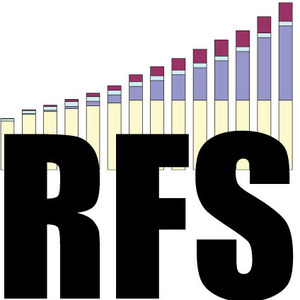EPA RFS proposal gives biodiesel a modest trajectory of growth

May 29, 2015
BY Ron Kotrba
The U.S. EPA released its much-anticipated proposed volume requirements for the renewable fuel standard (RFS) May 29, which, unlike its volume proposal issued in late 2013, set out a trajectory of growth for both biomass-based diesel and advanced biofuel categories.
The proposal calls for 1.63 billion gallons of biomass-based diesel for 2014, 1.7 billion gallons for 2015, 1.8 billion gallons for 2016 and 1.9 billion gallons for 2017. Biomass-based diesel was the only category in RFS given a proposal for 2017.
The advanced biofuel category proposal—important for biodiesel growth beyond the biomass-based diesel category since biodiesel is the most abundantly available commercially produced advanced biofuel as designated by EPA—grows year-over-year as well, starting at 2.68 billion ethanol-equivalent gallons for 2014, 2.9 billion gallons for 2015 and 3.4 billion for 2016.
“This proposal is a significant step in the right direction,” said National Biodiesel Board CEO Joe Jobe. “It is not perfect, but it will get the U.S. biodiesel industry growing again and put people back to work. I want to thank Administrator McCarthy and Secretary Vilsack for restoring growth to the program and for their commitment to renewable fuels.”
Jobe said more can be done, and the organization looks forward to working with the administration on strengthening biodiesel volumes for 2016 and 2017 during the comment period in the coming weeks.
Advertisement
“We are positive about today’s EPA announcement related to proposed biomass-based diesel volumes for 2014-'17 and overall advanced biofuels for 2014-'16,” said Daniel J. Oh, president and CEO of the largest U.S. biodiesel-producing company, Renewable Energy Group Inc. “This proposal reduces uncertainty and points towards continuing growth for the near future and beyond.” Oh said the renewable volume obligation (RVO) proposal is a significant improvement over the original 1.28 billion gallon 2014 D4 proposal. “Considering a potential 20 percent RIN carry-over, the proposed RVO suggests biomass-based diesel usage levels at over 2 billion gallons per year,” he said, adding that the proposal leaves room to grow D4 (biomass-based diesel category) and D5 (general advanced biofuel category) final RVOs.
“Bio” Joe Renwick, owner of the small-scale biodiesel facility Midlands Biofuels in Winnsboro, South Carolina, said while he’s thankful the numbers are finally out, he sees the proposed volumes as more of a stabilizer for the industry rather than a mechanism for growth. “I don’t know if it’ll facilitate the growth we need,” he told Biodiesel Magazine. “We need to be over 2 billion gallons by 2017.”
Raj Mosali, president of biodiesel process technology company Jatrodiesel Inc., said the EPA's issuance of volume proposals for biodiesel is the best news he’s heard in a long time for the industry. Mosali said the lack of any biodiesel volume proposals over the past two years has been extremely difficult for his business. “There’s been nothing out there to start with,” he told Biodiesel Magazine. “Now at least we have something to work off of. The uncertainty was just too much, so this is a huge positive.”
Advertisement
The American Soybean Association says the proposed volumes do not fully recognize or capitalize on the capacity and further growth potential of U.S. biodiesel. ASA President Wade Cowan noted that ASA believes the EPA and the Obama administration could do more to capitalize on additional benefits that could be achieved with more robust biomass-based diesel volumes, however he welcomed the release of the proposed rule and expressed the association’s hope that this action is a further sign of a return to schedule on the implementation of the RFS. “Again, we are glad to see the volumes for biomass-based diesel increased above the previous proposal," which stagnated at 1.28 billion gallons, he said. "Biodiesel provides significant economic and environmental benefits and we have the capacity to do more.”
Total renewable fuel volume proposals are 15.93 billion gallons for 2014, 16.3 billion gallons for 2015 and 17.4 billion gallons for 2016.
Cellulosic biofuel proposed volumes are 33 million gallons for 2014, 106 million gallons for 2015 and 206 million gallons for 2016.
Once the proposal is published in the Federal Register, it will be open for public comment until July 27, 2015.
Related Stories
The biodiesel industry has been facing turbulence, but the release of long-overdue policy could course-correct.
The U.S. House of Representatives early on May 22 narrowly passed a reconciliation bill that includes provisions updating and extending the 45Z clean fuel production tax credit. The bill, H.R. 1, will now be considered by the U.S. Senate.
U.S. EPA Administrator Lee Zeldin on May 21 stressed the agency is working “as fast as humanly possible” to finalize a rulemaking setting 2026 RFS RVOs during a hearing held by the U.S. Senate Committee on Environment and Public Works.
Clean Fuels Alliance America on May 22 delivered a letter to U.S. EPA Administrator Lee Zeldin, urging him to set the 2026 RFS biomass-based diesel volume at no less than 5.25 billion gallons and allow continued growth in the 2027 volumes.
A group of 28 House members on May 16 sent a letter to President Donald Trump urging his administration to adopt timely, robust Renewable Fuel Standard renewable volume obligations (RVOs) for 2026 and beyond.
Upcoming Events










